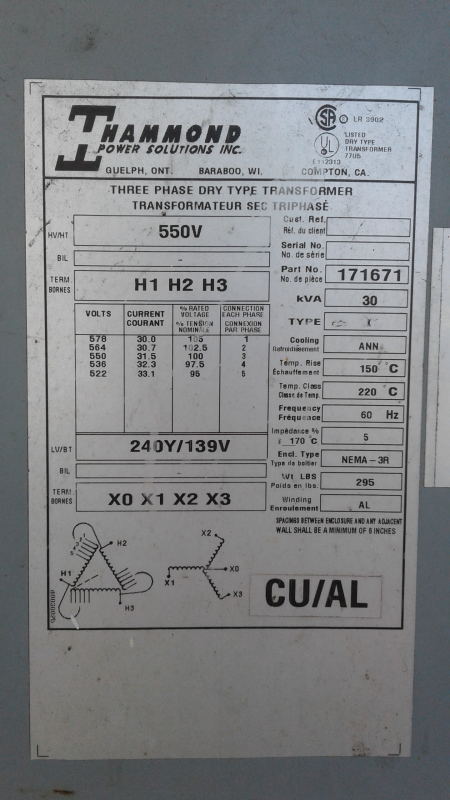crthompson
Electrical
Gentlemen, I have attached a photo of the XFMR in question. The primary of the XFMR is Nominal 550V Delta. Our plant voltage is roughly 580V on all 3 phases. The secondary of the XFMR is 240Y/139V. We are only using two legs of the Y on the secondary. All secondary loads are from phase to neutral (139V). All of our loads are rated at 120V. I am hesitant to put 139V on 120V devices. My question is this... If I were to disconnect the neutral point of the unused secondary winding, wouldn't the voltage from the other two legs to neutral be 120V? At that point, you would have 240V across the two used legs, with the neutral acting as a center tap making it 120V from each leg to neutral. Of course I could be missing something... Any advice would be appreciated!


